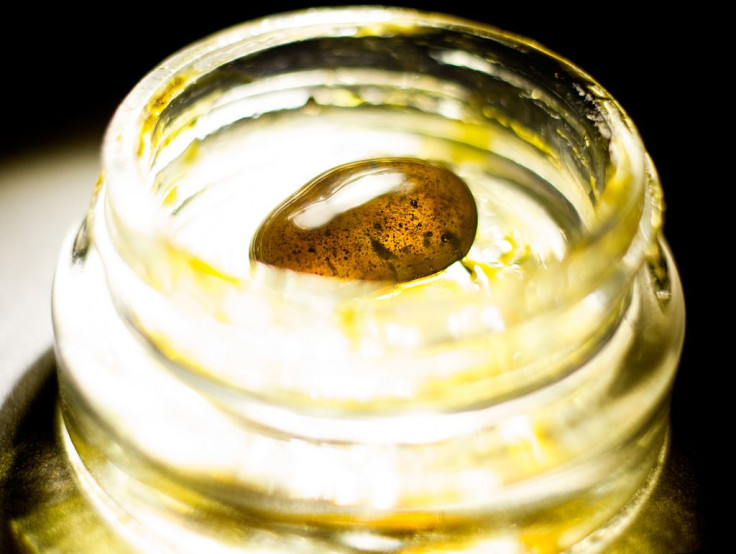Dabs, A Marijuana Concentrate, Is Becoming More Popular: But Is It Dangerous?

Gone are the days when people would simply smoke a marijuana joint. In states where weed’s been legalized — both medicinally and recreationally — it can be found in various forms, from the whole plant to edibles to concentrates. One of those concentrates, called dabs, is the subject of a new paper calling into question whether its growing popularity is putting those who use them or make them, as well as those nearby, in danger.
Dabs — also known as butane hash oil (BHO), honey oil, budder, shatter, and wax — is a highly concentrated extract of marijuana’s psychoactive ingredient tetrahydrocannabidiol, or THC. It is thick gummy, and brownish-green, and looks like hot candle wax that’s been spilled onto a piece of paper and left to dry. When smoked through a modified bong (water pipe), it induces an instantaneous, powerful high that some users have described as being like the first time they smoked weed.
“At a minimum, dabs are four times as strong as a joint, and the high is administered all at once,” John Stogner, co-author of the paper and an assistant professor of criminology at the University of North Carolina, Charlotte, told Live Science. “It’s really exploding onto the drug-use scene.”
Stogner may have been speaking literally, too. Producing dabs is extremely dangerous process involving butane gas, which extracts the THC when it’s poured over the marijuana. The mixture is then heated up to evaporate the butane so only the thick concentrate remains. Amateur producers often fumble this step, however, as the gas often leaves vapors in the air, which can lead to explosions small enough to cause severe burns and large enough to light their homes on fire.
“There’s a big danger of fire even if they aren’t using some sort of heating device,” Stogner told HealthDay. “Given the amount of butane that can build up during this process, these individuals should be worried about any spark from any source.” In Colorado alone, the number of butane gas explosions jumped from 12 in 2013 to 32 in 2014, the year sales of recreational marijuana began.
Stogner’s concern is that more people will attempt making dabs as their popularity grows, including in states where it isn’t legalized yet. There’s already a wealth of instructional videos on YouTube and other sites showing the step-by-step process. And while the process is dangerous, those who attempt it do so because the end result is a drug that contains upwards of 95 percent THC.
Despite dabs being marijuana-based, Stogner says “it’s dangerous to assume the risks of dabbing are akin to [those of] smoking marijuana.” The health effects may be entirely different. In fact, the only study to investigate the effects of dabbing found using it may increase tolerance to the drug and cause more severe withdrawal symptoms than, Live Science reported. Additionally, those who smoke dabs may also be unaware of THC concentrations, and may be smoking other chemicals, such as gases released from the bong’s metal, including rust and solder, the authors said.
There’s no stopping people from consuming dabs in states where marijuana has been legalized, and where high-tech, properly ventilated labs produce them. However, state governments will soon have to decide whether producing it at home is against the law.
In March, the Denver District Attorney’s Office dropped felony charges against Paul Mannaioni after an explosion sent him and two others to the hospital. The judge presiding over his case decided both his defense — that producing dabs was included in the state’s legalization bill — and former Attorney General John Suthers, who said manufacturing it at home was illegal, were wrong. Meanwhile, a man in Washington was sentenced last week to nine years in prison for causing an explosion that sent seven people to the hospital and led to an 87-year-old woman dying from injuries sustained while trying to escape the burning building.
Source: Stogner J, et al. Assessing the Dangers of “Dabbing”: Mere Marijuana or Harmful New Trend? Pediatrics. 2015.



























